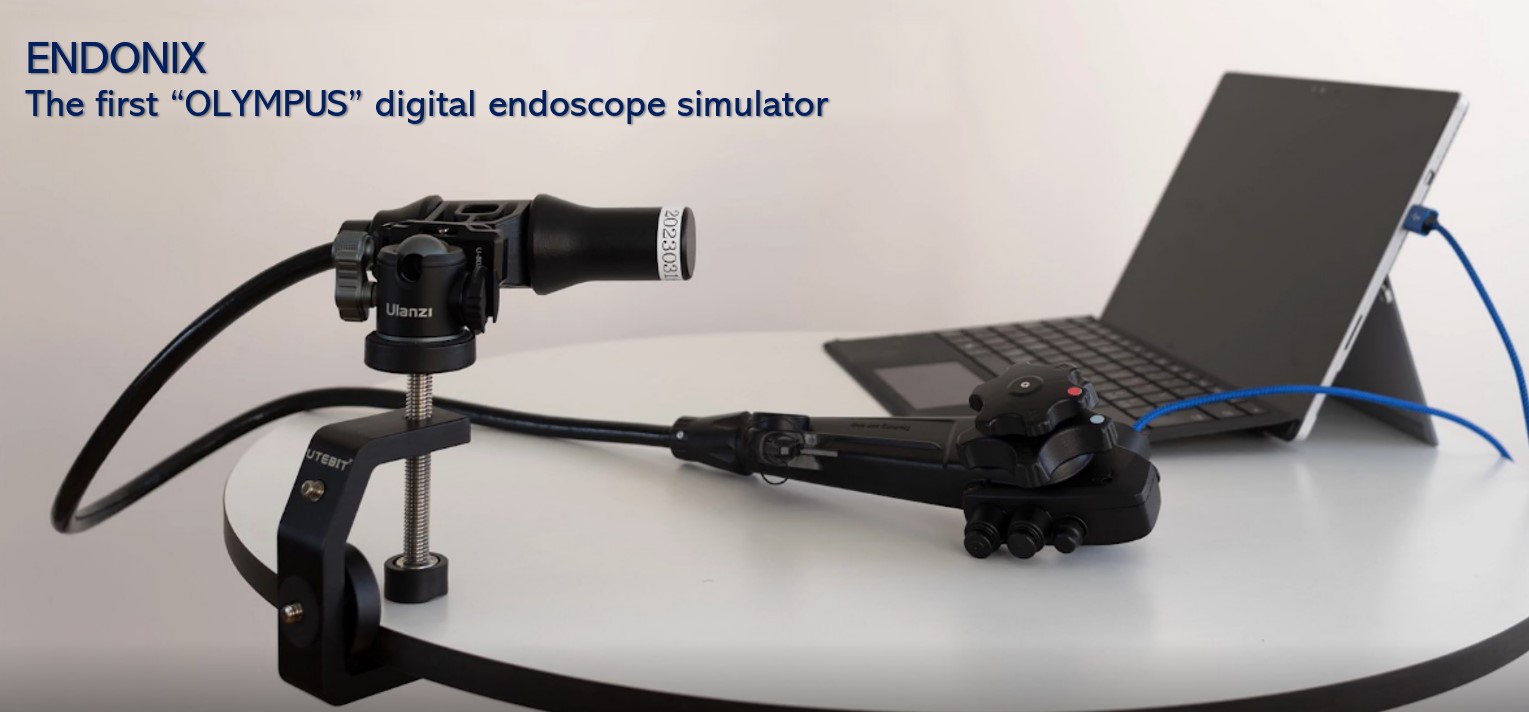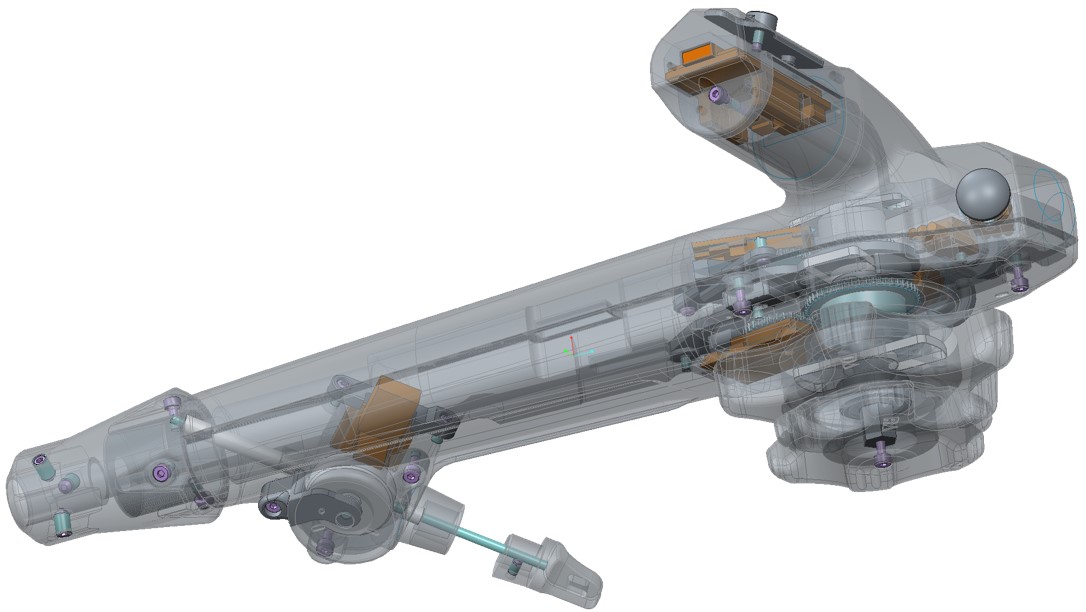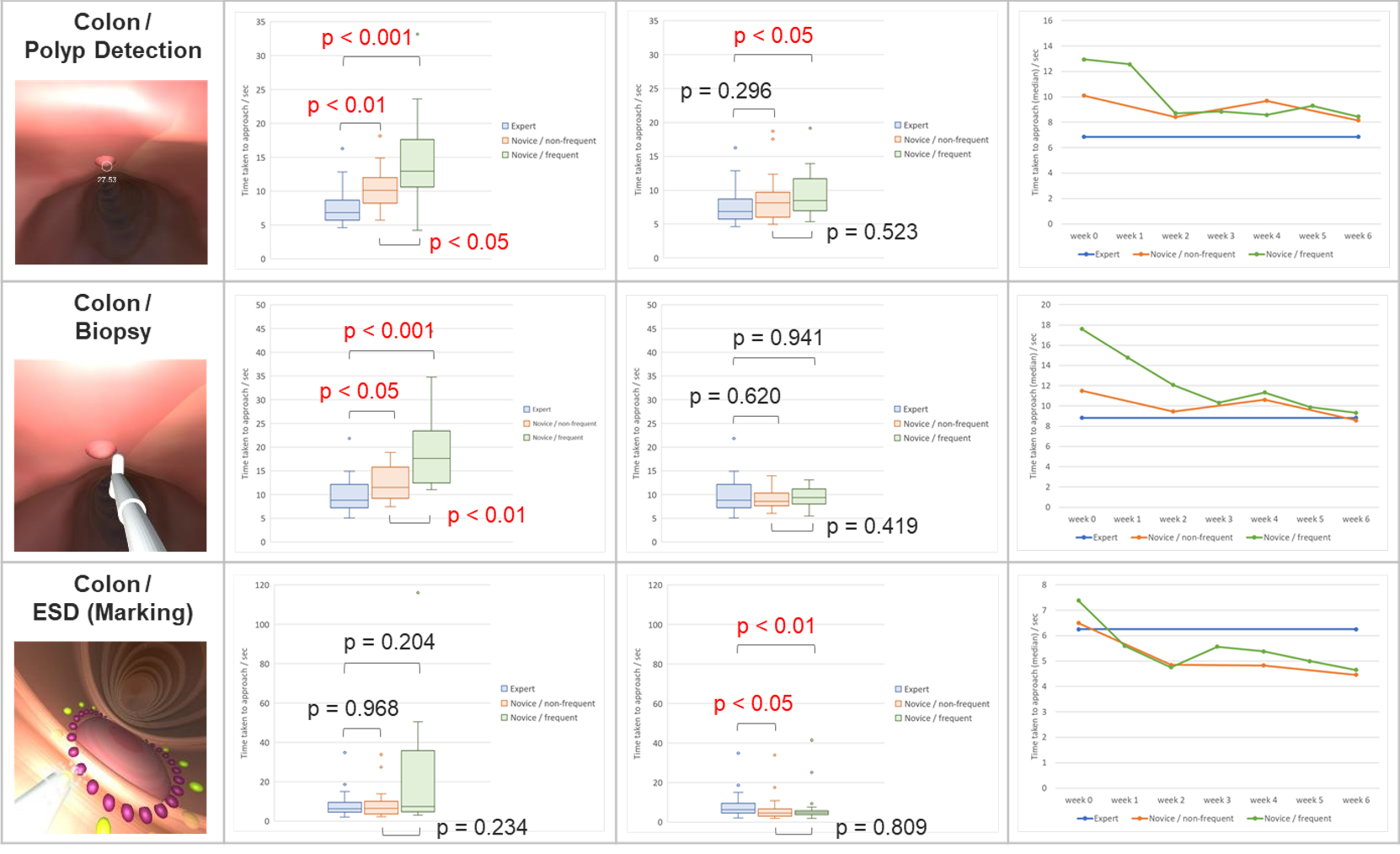
We at OLYMPUS hope to make endoscopy-related adverse event zero and promote accurate and safe endoscopic procedures by providing appropriate endoscopic training to more endoscopists.
In the search to provide an environment where more endoscopists can easily train for endoscopic procedures anytime, anywhere, we have come up with a simple endoscopic training simulator (ENDONIX).
ENDONIX is a simulator that allows users to practice various endoscopic manipulations in a fun, game-like manner using an endoscope-shaped game controller originally developed in reference to common portable game consoles.
ENDONIX = ENDOscope + electroNIcs + eXperience
Endoscopic training like a game …, we were wondering if such a concept would be accepted by endoscopists.
It was at this time that the NCC-EPOC (National Cancer Center – Exploratory Oncology Research & Clinical Trial Center) started an industry-academia collaboration initiative, and we had the opportunity to participate as one of its themes.
The validation of this game-like endoscopic training simulator (ENDONIX) started with Dr. Haruhisa Suzuki as leader of the NCC side.


The concept of “game-like endoscopy training,” which we were most concerned about, was very favorably received. In fact, the NCC doctors positively evaluated it as a good way to concentrate on the difficult manipulations in the procedure and enjoy the repetitive practice.
The first challenge we faced was how to describe the “endoscopic-like” characteristics of the product.
Whether ENDONIX looks like simply as a game or as a training simulator depends on how well it represents this “endoscopic-like”. The unique feel of endoscope knob, the feel when operating the insertion tube, the faint delay when operating the knob, and the view of the lumen … If we pursue “endoscope-like” characteristics too much, the number of functions to be included will increase and “simplicity” will be lost.
We then identified the important movement elements of the procedure, and re-presented the procedure using only those movement elements, thereby maintaining “simplicity” while successfully expressing the minimum necessary “endoscopic-like” characteristics.


The next challenge was “identifying and communicating experience,” i.e., what parts of the endoscopic manipulation are important and difficult, and how to express and communicate them as training.
Once we get used to manipulating an endoscope, we tend to forget what happen when we were unfamiliar with it. On the other hand, when we are unfamiliar with a manipulation, we do not know why we cannot perform it well. There is a big gap between the two, and we challenged ourselves to figure out how to fill this gap.
The first thing we did was to identify which manipulations novice endoscopists find difficult in which situations. Various training apps (games) were prototyped, and data was obtained from OLYMPUS employees who may not have had prior experience with endoscopic manipulations. Among the candidate training apps (games), we selected only those that were difficult for beginners to learn yet show improvement with continued practice.
Second, no matter how good beginners become in manipulating an endoscope at these apps (games), it is meaningless if it is not useful in actual clinical practice. Therefore, we asked NCC Experts to actually experience the training apps (games) to make sure that it could reproduce clinical situations and guide novices to the correct manipulation and made modifications if necessary. In addition, NCC conducted an independent evaluation study on the training effects of training apps (games) and confirmed that endoscopic manipulation improved in novice trainees.

ENDONIX was created through these processes to provide a place where more endoscopists can easily learn essential endoscopic procedures. Yet there are still areas where the quality and quantity of content, functionality, and performance are not sufficient, we will continue to verify and improve them so that we can provide more efficient training to more endoscopists.
Finally, I would like to express my sincere gratitude to Dr. Haruhisa Suzuki and all those involved at NCC for warmly accepting such a challenging development theme and for their guidance.

